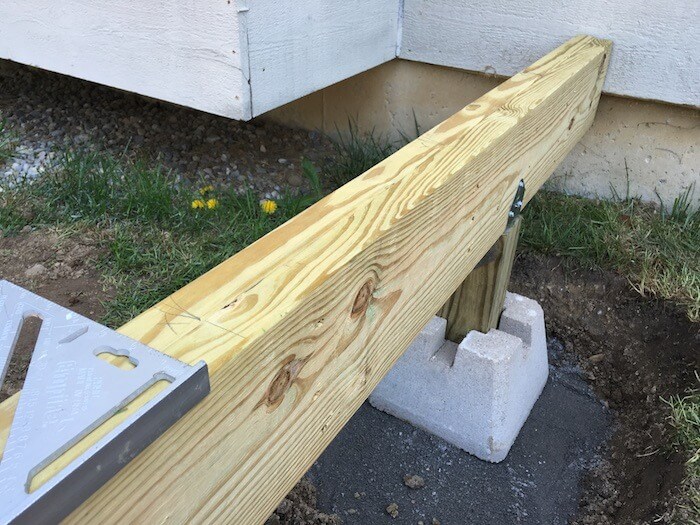Calculating Out How Many Deck Blocks for a Floating Deck
Floating decks, also known as freestanding or ground-level decks, sit low to the ground without needing a permanent foundation, limiting any chance of hitting underground services such as water mains and electrical cables.
To construct a floating deck properly, it is crucial that the appropriate number and arrangement of deck blocks are known in advance.
Calculate Your Deck Weight
Many customers want to know how much weight their deck can bear, which can be an uncertain question as it depends on frame structure, soil type and footings – among many other variables. To get an accurate answer to this query, it would be prudent to consult a structural engineer or consult an authoritative book for this task.
Load capacity of a deck is determined by how much dead and live load it can withstand, such as dead weight. A typical pressure-treated wood deck may support up to 50 pounds per square foot of weight distribution between decking and framing members.
Live load refers to any additional weight that will be placed upon a deck by furniture and people, such as hot tubs or outdoor kitchens. As this extra weight adds up quickly, it is vital that you determine your deck load capacity before installing anything heavy onto it.
Calculating your deck load capacity requires taking into account several variables:
Calculate Your Deck Length
Before purchasing lumber for your deck frame, it’s essential that you know its length. A basic rectangle can be easily calculated: Length (feet) x Width (feet). However, if your project includes stairs or something other than rectangles then this equation becomes more complex.
After this step is completed, consider the size of your deck stairs and any features, like railing systems or seating arrangements that could influence spacing requirements. Also take note of any code restrictions on maximum spans your framing materials can support; depending on their composition and expected loads, some codes specify maximum span limits depending on specific wood species used in building the structure.
Once you know the dimensions of your deck, using a deck material calculator will enable you to accurately ascertain how many boards will be necessary – helping prevent overspending by purchasing more material than is necessary.
This calculator can also come in handy if you are using hidden fasteners that impact how far apart you space deck boards, which could subsequently affect how the calculator determines their spacing. With its handy interface, this calculator can tell you exactly how many boards will need to account for any gaps created by fasteners.
Deck material calculator will also provide an estimate for how many joists will be needed, based on standard spacing (12 or 16 inches on center) and length of your deck. Customize this number based on height or choose different options to see how joist spacing looks on your build.
Calculate Your Deck Width
Before purchasing deck materials, it’s crucial to understand your exact measurements. This helps ensure you order sufficient material and your design doesn’t feel cramped or congested, and also determines how much money your project will cost.
Building a rectangular or square deck requires simple calculations; however, more complex designs may necessitate more calculations as stairs and other non-standard shapes must be considered when planning them out. Although more complicated designs require more calculations, they still are doable!
Once again, you must consider how many board widths will be necessary, using the spacing calculator as a resource. Don’t forget to leave some extra material for expansion gaps as this will keep your deck looking its best and help prevent any potential issues down the road.
After you have decided on your desired width and span of joists for your deck, the next step will be determining how many you will require. Most standard deck joist spans are 12 or 16 inches on center (OC). Therefore, homeowners can multiply their desired deck width times this figure to find out exactly how many 16 foot long joists are necessary. For instance, a 12′ wide deck using 16 inch OC span requires eight 16′ long joists.
Calculate Your Deck Depth
To determine your deck depth, divide its total square footage by its board width to determine how many deck boards will be needed based on this formula. However, if your deck includes stairs or safety measures like railings that require additional support beams (stairs/railings etc), make sure these factors are also taken into consideration; more complex designs require more framing materials.
As soon as you have an understanding of your deck dimensions, the next step should be calculating its joist sizes and spacing. Joists serve to support deck boards; their size depends on its span (distance between ends). A basic deck would use 2x 6s or 2x 10s; for heavier or odd-shaped decks steel may be preferable as they’re stronger, straighter, don’t warp over time and could save money in the long run.
Use the Trex Deck Designer online tool to select an optimal joist size for your deck. It will show how many joists and deck boards will be necessary, in addition to any additional materials needed to build it. Plus, enter any details such as stairs or ADA-compliant railings into this calculation for a complete picture of how this affects the price of building your deck!


